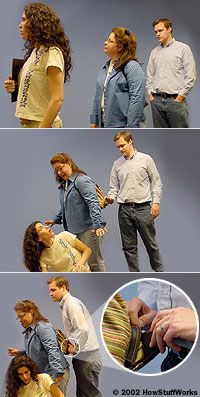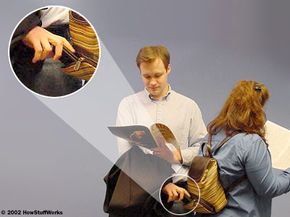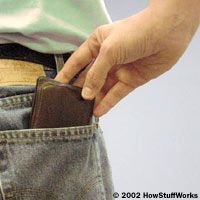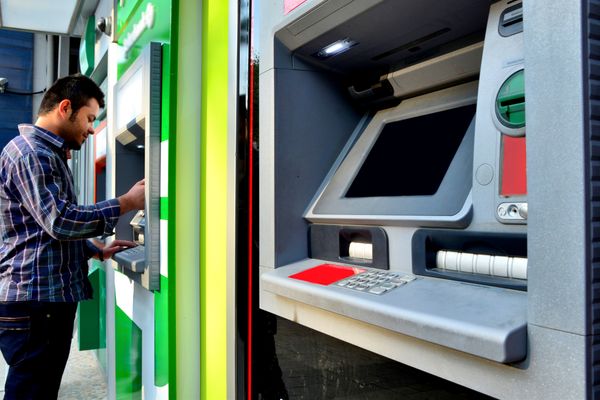Pickpocketing is one of the oldest and most widespread crimes in the world. The appeal is its relative safety: A skilled pickpocket can make off with just as much money as an armed robber, without much danger of confrontation or risk of being identified in a line-up. By the time the victim realizes what's happened, the pickpocket is long gone. And since no weapons are involved, pickpockets who do get caught face minimal jail time.
All of this is bad news for the rest of us. When you're traveling, a pickpocket can easily ruin your trip, lifting your money, credit cards and identification in a few seconds. And there's very little hope of getting any of it back. In this article, we'll see how these thieves can rob people blind without them even knowing it. We'll also find out what you can do to avoid being a "mark" (a con or pickpocket target) and what you should do if your wallet is stolen.
Advertisement

There are all sorts of pickpockets in the world, working at various skill levels. The lowest level is made of simple opportunists. They don't employ any special technique; they just seek out people who've left themselves vulnerable. For example, college students often study in crowded public areas, with their backpacks sitting open next to them. A pickpocket simply sits nearby and surreptitiously reaches into the victim's backpack. Opportunists also target people sleeping at the beach and waiting around with their luggage in airports.
Getting a wallet out of somebody's pocket or purse is a little more difficult because the pickpocket has to touch the mark or something close to the mark's body. The basic approach is to mask the illegal contact with expected, benign contact.
In a crowded subway car, for example, it's normal for strangers to press against you, so you don't notice something pressing against your pocket or purse. If the pickpocket is good, you never feel a thing. Usually, pickpockets carry jackets or newspapers to cover their hands.
The same approach works in less crowded areas as well. A pickpocket team might casually sandwich you between them in order to press against your body. In a standard scheme, the "stall" suddenly stops in front of the mark so that the mark bumps into her. The "pick" pretends to accidentally bump into the mark from behind and graciously apologizes while removing the mark's wallet. It might seem strange that the stall suddenly stopped, but the pick seems completely innocent, so the mark doesn't notice she's been robbed.
Next, we'll take a look at exactly why this works.
Advertisement





